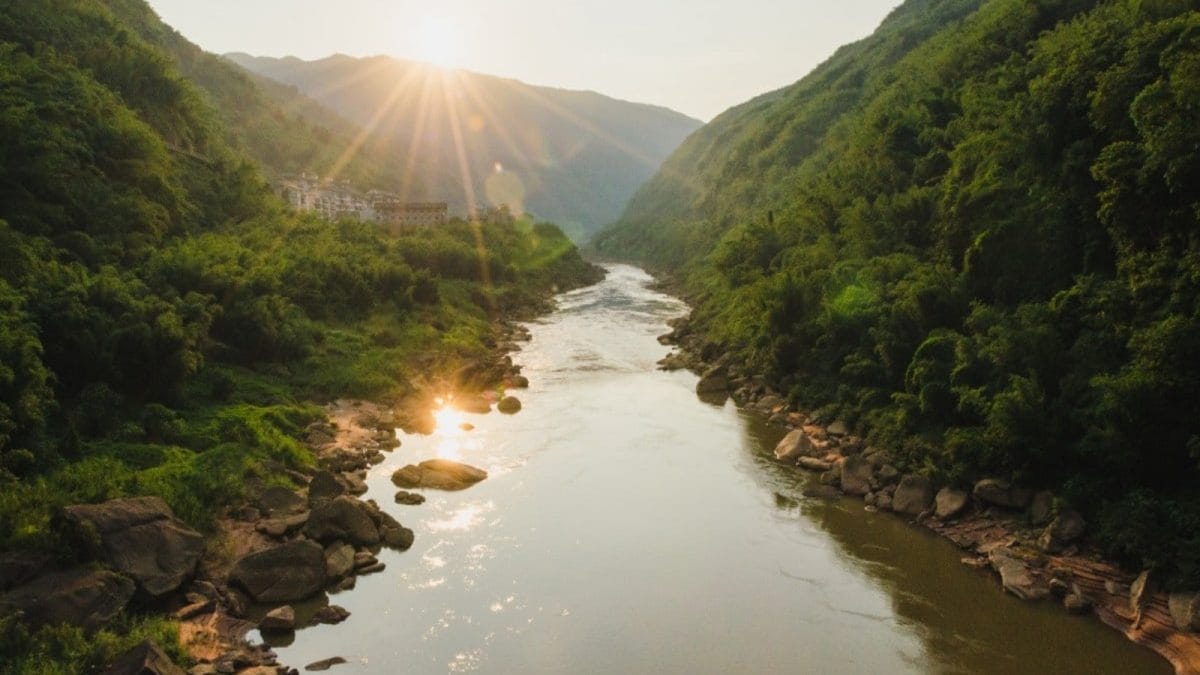Last Updated:
From its quiet beginning in Germany’s Black Forest, the Danube becomes a lifeline for millions of people and countless cities.

In its steady flow lies a reminder that while borders separate us, rivers like the Danube show how deeply humanity is connected. (Representative image)
Some rivers shape landscapes, inspire poetry, or define civilisations, but the Danube goes further. Stretching 2,860 km across Europe, it is the second-longest river on the continent after Russia’s Volga. What makes it truly unique, however, is not its size but its reach. The Danube flows through more national borders than any other river on Earth, winding its way across ten countries: Germany, Austria, Slovakia, Hungary, Croatia, Serbia, Bulgaria, Romania, Moldova, and Ukraine.
From its quiet beginning in Germany’s Black Forest, the Danube becomes a lifeline for millions of people and countless cities. It doesn’t just cut across lands, it connects them. Along its journey, it nourishes villages, supports capitals, and has played a central role in Europe’s history, culture, and economy.
A river’s journey
The Danube starts humbly, formed by the meeting of two small streams, the Breg and Brigach, at Donaueschingen in Germany. From there, it sweeps northeast and then southeast, carving a path that links diverse landscapes and cultures. Uniquely, the Danube is the only river in the world to pass through four national capitals: Vienna (Austria), Bratislava (Slovakia), Budapest (Hungary), and Belgrade (Serbia). These cities owe much of their history and growth to the river, which provided trade routes, water supply, and natural protection.
A river of empires
For centuries, the Danube was more than just a natural wonder; it was a political boundary. It once marked the northern edge of the Roman Empire, serving as a guarded frontier. Later, it became central to the power struggles of kingdoms and empires, from the Habsburgs in Austria to the Ottomans in the Balkans. Castles, fortresses, and palaces still stand along its banks as reminders of this turbulent past.
In modern history, the Danube evolved into an international highway of trade. As early as the 1600s, treaties allowed safe navigation. Eventually, in 1948, the Danube Commission was formed to regulate traffic and ensure cooperation among the countries it flows through, a testament to the river’s continued importance.
The basin and the delta
The Danube’s basin covers an enormous 817,000 square kilometres, spreading into nine more countries beyond the ten it directly flows through. It collects waters from the Alps, the Carpathians, and wide plains, fed by more than 300 tributaries, including the Drava, Tisza, and Sava.
At its end lies the Danube Delta, shared between Romania and Ukraine. Over thousands of years, silt carried by the river has created one of Europe’s richest ecosystems.
Today, the delta is home to hundreds of species of birds, fish, and rare plants. What is more, it is still expanding into the Black Sea, steadily reshaping the coastline year by year.
Trade, energy, and environment
The Danube is a vital economic artery for Europe. Thanks to the Main-Danube Canal, it connects to the Rhine, allowing ships to travel from the North Sea all the way to the Black Sea. This waterway makes trade more efficient and reduces carbon emissions compared to overland transport.
The river is also harnessed for hydroelectric power, particularly at the Iron Gate Dam between Romania and Serbia, one of the largest dams in Europe. But development has come at a cost.
Industrial waste, agricultural runoff, and urban pollution have all damaged the river’s health. In response, international conservation efforts are underway to restore ecosystems, improve water quality, and protect biodiversity.
A cultural icon
The Danube is more than just a river; it is a symbol woven into Europe’s identity. It has been celebrated in music, art, and literature, most famously in Johann Strauss’s waltz, The Blue Danube. To many, it represents connection, flowing freely across borders at a time when boundaries and divisions dominate headlines.
From empires to modern nations, from trade to art, the Danube has carried the weight of history while continuing to sustain life today. It remains both a physical and cultural bridge, uniting people and places across Europe.
In its steady flow lies a reminder that while borders separate us, rivers like the Danube show how deeply humanity is connected.
About the Author

Nishad Thaivalappil is a Lifestyle and Entertainment Journalist with almost a decade-long odyssey in the realms of movies, music, culture, food, and travel. He leads the Lifestyle desk at News18.com. Besides ha…Read More
Nishad Thaivalappil is a Lifestyle and Entertainment Journalist with almost a decade-long odyssey in the realms of movies, music, culture, food, and travel. He leads the Lifestyle desk at News18.com. Besides ha… Read More









